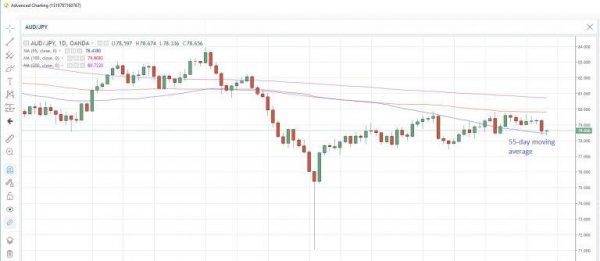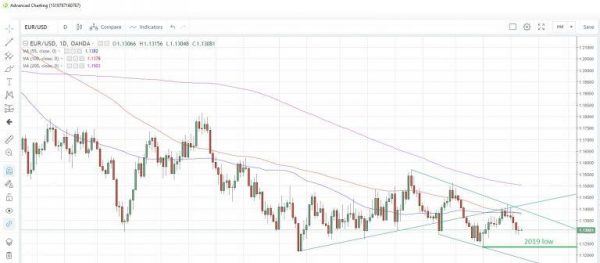A tale of two contrasting economies has unfolded over the past 24 hours, with the US and Australia at opposite ends of the spectrum.
Australia posts record surplus
Data released today showed Australia’s trade surplus surged to A$4.55 billion in January, a record high according to data compiled by Oanda going back to 2007. This contrasts with US data for December, which was released last night, which showed the US trade deficit ballooning to $59.8 billion, a level not seen since 2008. Australia’s higher surplus came from a strong uptick in exports, up 5% in the month after a 2% contraction in December.
Released at the same time, the country’s retail sales data for January was a mild disappointment. Sales increased 0.1% m/m, a solid rebound from December’s -0.4%, but failed to match economists’ forecasts of a 0.3% gain.
The knee-jerk reaction to the retail sales data was to sell the Aussie, with AUD/USD weakening to 0.7020, the lowest since January 4, while AUD/JPY edged down to a three-week low of 78.33, though still held above the 55-day moving average at 78.438.
Both FX pairs subsequently rebounded as the impact of the trade numbers took hold. They are now at 0.7047 and 78.709, respectively.
AUD/JPY Daily Chart
The Australia200 index touched a six-month high this morning, shrugging off weaker than expected retail sales data. The index could be benefiting from a shift in the outlook for RBA monetary policy, with markets starting to price in a cut by June
The August high of 6,390 could be the next resistance point as the index is comfortably above all the Fibonacci retracement levels of the August-December drop
Retail sales rose 0.1% m/m in January, a strong rebound from December’s -0.4%, but below economists’ estimates of a 0.3% gain. The trade surplus widened to a record high in January due to a strong exports performance.
How will the ECB react?
The ECB rate meeting will probably attract more attention than normal today as the markets await the central bank’s reaction to the recent spate of softer economic data. There was speculation in European press yesterday that the ECB might lower growth and inflation forecasts to such a level that would warrant considering another phase of targeted loans to banks (their form of quantitative easing).
If that were the case, EUR would struggle to maintain its fragile foothold above 1.13 and retest the 2019 lows near 1.1234.
EUR/USD Daily Chart
Other data likely to get lost in the ECB noise
The rest of the data releases for today are relatively minor. Euro-zone Q4 GDP is not expected to be revised from the +0.2% q/q and +1.2% y/y first estimates, while the region’s unemployment rate is seen unchanged in Q1 from the previous quarter.
On the US front, we see Q4 non-farm productivity and unit labour costs, consumer credit totals for January and we hear a speech from the Fed’s Brainard.















